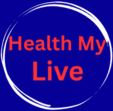
Vitamin D, often called the “sunshine vitamin,” plays a vital role in keeping your bones strong, supporting your immune system, and regulating mood. Yet, millions worldwide struggle with low levels without even realizing it. Roughly 40% of adults in the U.S. have insufficient vitamin D, according to a National Health and Nutrition Examination Survey. This deficiency isn’t always obvious—symptoms can be subtle or mistaken for other issues. Let’s break down how to spot the signs, why it matters, and what you can do to fix it.
One of the most common red flags is persistent fatigue. Unlike everyday tiredness, vitamin D-related exhaustion often feels unshakable, even after adequate sleep. A 2020 study in Medicine found that 89% of participants with chronic fatigue had low vitamin D levels. Muscle weakness, especially in the legs, is another telltale sign. Vitamin D helps muscles absorb calcium, which is essential for contraction. Without it, you might notice trouble climbing stairs or standing up from a chair. Bone pain, particularly in the lower back or hips, is also linked to deficiency. Dr. Michael Holick, a leading vitamin D researcher, explains, “Vitamin D ensures calcium is absorbed efficiently. Without it, bones become brittle, leading to aches or even fractures.”
Certain groups face a higher risk. People with darker skin produce less vitamin D from sunlight due to higher melanin levels. Older adults are also vulnerable because skin becomes less efficient at synthesizing the vitamin with age. Obesity is another factor—vitamin D is fat-soluble, so excess body fat can trap it, reducing its availability. Those living in northern latitudes or spending little time outdoors, like office workers, often struggle to get enough sun. Breastfed infants, unless supplemented, may also lack adequate vitamin D, as human milk contains minimal amounts.
Diagnosing a deficiency starts with a simple blood test measuring 25-hydroxyvitamin D. Levels below 20 ng/mL are considered deficient, while 20–29 ng/mL are insufficient. The Endocrine Society recommends aiming for 40–60 ng/mL for optimal health. While self-testing kits exist, consulting a healthcare provider ensures accurate interpretation and personalized advice. For example, a 45-year-old woman with joint pain and fatigue discovered her vitamin D level was 18 ng/mL through a routine checkup. After six weeks of supplements, her energy improved dramatically.
Addressing deficiency often involves supplements. Vitamin D3 (cholecalciferol) is preferred over D2 (ergocalciferol) because it’s more effective at raising blood levels. The recommended daily dose varies: 600–800 IU for most adults, but deficient individuals may need 1,000–5,000 IU temporarily. Always consult a doctor—overdoing supplements can cause toxicity, leading to nausea or kidney issues. Pairing supplements with fatty foods like avocado or nuts enhances absorption.
Sunlight remains the most natural source. Spending 10–30 minutes in midday sun, arms and legs exposed, can boost production. However, factors like sunscreen use, pollution, and skin tone affect this. A fair-skinned person in Miami might make enough vitamin D in 10 minutes, while someone with darker skin in Seattle may need 30 minutes or more. Balance is key: excessive sun raises skin cancer risk, so moderation matters.
Diet alone rarely fixes a deficiency, but it helps maintain levels. Fatty fish (salmon, mackerel), egg yolks, and fortified foods like milk or cereal contribute small amounts. For vegetarians, UV-exposed mushrooms are a unique source. A 2023 study in Nutrients showed that combining diet and sunlight reduced deficiency rates by 34% in at-risk populations.
Prevention is straightforward but requires consistency. Aim for regular, moderate sun exposure, eat vitamin D-rich foods, and consider a daily supplement if you’re high-risk. Annual blood tests are wise for those with chronic conditions like Crohn’s disease or celiac, which impair nutrient absorption. Pregnant women, older adults, and people with osteoporosis should prioritize monitoring.
Vitamin D’s impact extends beyond bones. Emerging research links deficiency to depression, heart disease, and weakened immunity. A 2021 meta-analysis in JAMA found that low vitamin D increased severe COVID-19 risk by 80%. While correlation isn’t causation, maintaining healthy levels supports overall resilience.
Myths about vitamin D abound. “You can get enough from diet alone” is misleading—very few foods contain sufficient amounts. “More sun is always better” ignores skin cancer risks. “All supplements are the same” overlooks D3’s superiority. Stick to science-backed strategies.
In summary, vitamin D deficiency is widespread but manageable. Listen to your body, get tested if symptoms arise, and take proactive steps. Small changes—like a daily walk outdoors or a quality supplement—can make a big difference. Your bones, muscles, and immune system will thank you.
